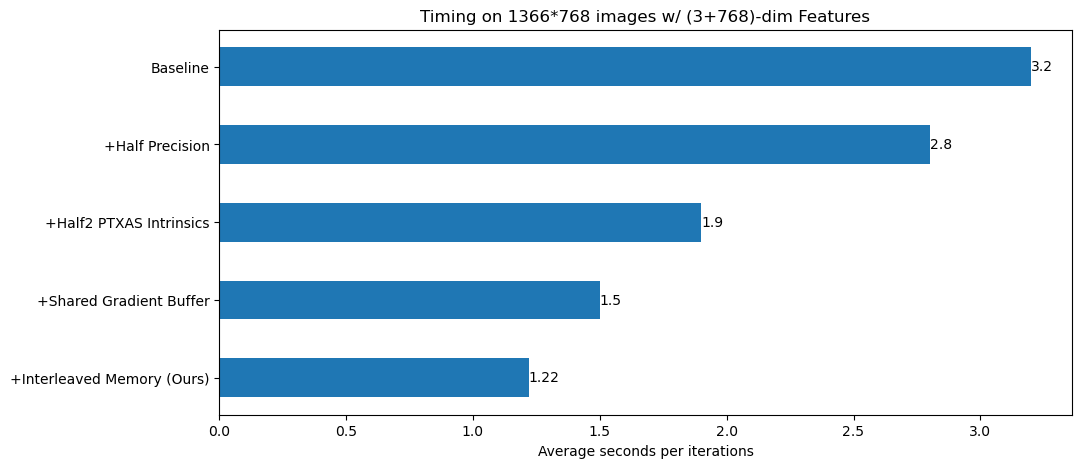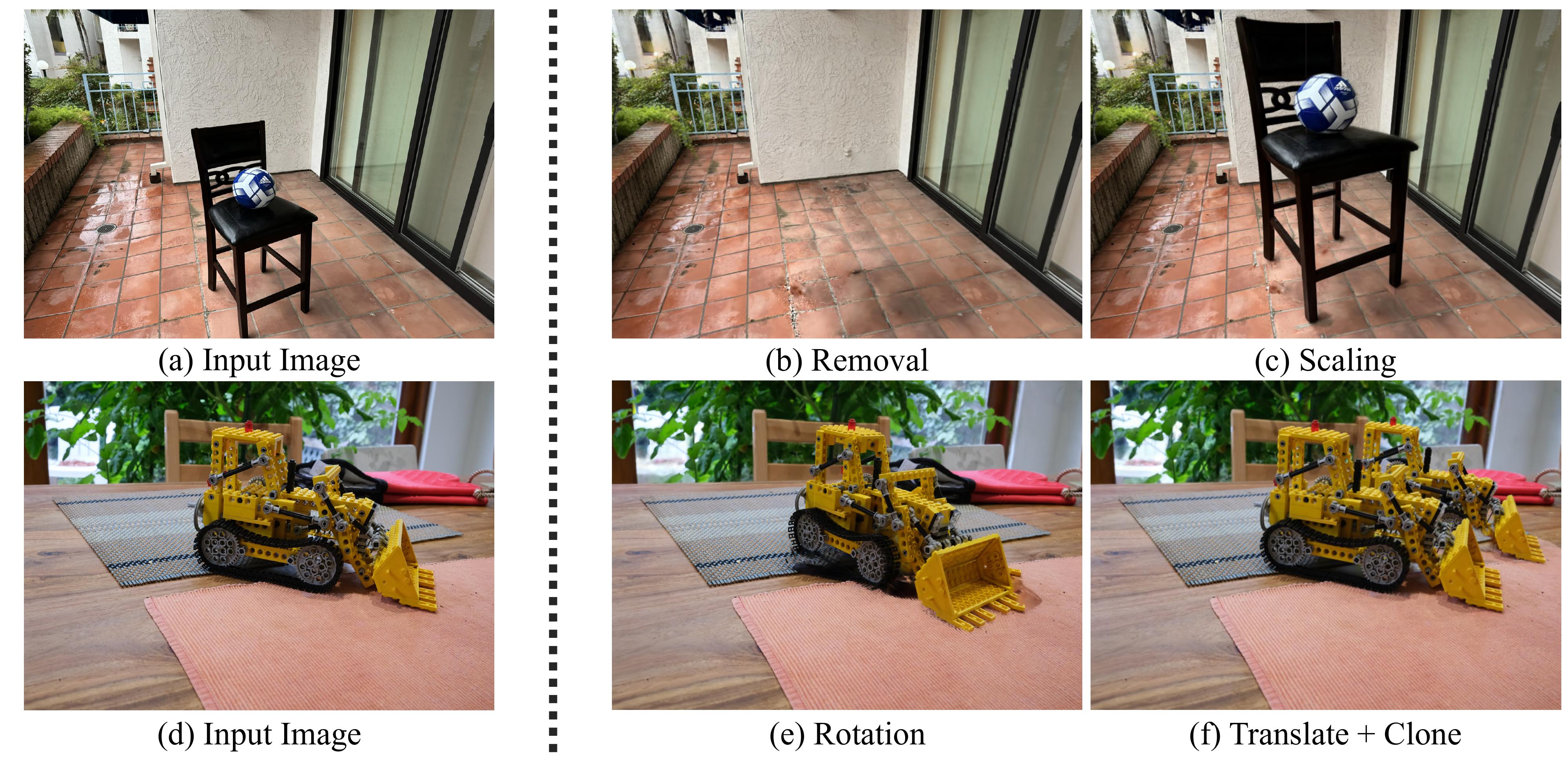Abstract
Scene representations using 3D Gaussian primitives have produced excellent
results in modeling the appearance of static and dynamic 3D scenes. Many
graphics applications, however, demand the ability to manipulate both the
appearance and the physical properties of objects. We introduce
Feature Splatting, an approach that unifies physics-based dynamic scene
synthesis with rich semantics from vision language foundation models that
are grounded by natural language. Our first contribution is a way to distill
high-quality, object-centric vision-language features into 3D Gaussians, that
enables semi-automatic scene decomposition using text queries. Our second
contribution is a way to synthesize physics-based dynamics from an otherwise
static scene using a particle-based simulator, in which material properties
are assigned automatically via text queries. We ablate key techniques used in
this pipeline, to illustrate the challenge and opportunities in using
feature-carrying 3D Gaussians as a unified format for appearance, geometry,
material properties and semantics grounded on natural language.
Optimized Feature Rasterization


Feature splatting is engineeringly optimized for Gaussian+feature research with memory-optimized CUDA kernels to rasterize low-to-high-dim features.
New: Try Feature splatting in NerfStudio✨!
Fast feature extraction speed (~0.2s per image)🐇.
Feature splatting trains right away - taking only ~5mins for installation, weight download, and feature extraction!
In-browser interactive scene editing.
We implemented custom widgets in NerfStudio to support in-browser geometric editing and physics simulation based on feature splatting.
Language-Driven Physics-Based Scene Synthesis

Feature splatting jointly optimizes for a unified Gaussian representation for appearance, geometry, and semantics. Feature splatting goes beyond open-vocabulary segmentation to dive into component-level details to automatically determines physical properties of materials based on features.
Shake a rigid vase with elastic flower stems.
Make a slim standing statue move like jelly.
Turn a lego bulldozer into a pile of sand.
Make a ball fall off from a chair.
Simulate physics effects on gaussian-ized synthetic assets from Objaverse.
Turn Objaverse assets into GS assets with features.
Geometric Editing

Feature splatting implements several editing primitives for scene editing, such as object removal, scaling, rotation, translation, and cloning.
Method Overview
Splatting Features onto Gaussians


We fuse features from multiple foundation 2D Vision models. We train latent features to rasterize both SAM-enhanced CLIP features and DINOv2 features for better quality.
PCA Visualization of latent features of every Gaussian in the garden vase scene using Vuer.
MPM-based Physics Simulation

Given an object segmented by user query, Feature splatting uses a pre-defined set of names of rigid material queries (e.g., ceramic and wood) to determine physical property of components, and estimate ground a support using language queries (e.g., floor and table). These information is turned in to a customized physics engine based on Taichi for physics simulation.
Overview Video
BibTeX
@inproceedings{qiu-2024-featuresplatting,
title={Language-Driven Physics-Based Scene Synthesis and Editing via Feature Splatting},
author={Ri-Zhao Qiu and Ge Yang and Weijia Zeng and Xiaolong Wang},
booktitle={European Conference on Computer Vision (ECCV)},
year={2024}
}